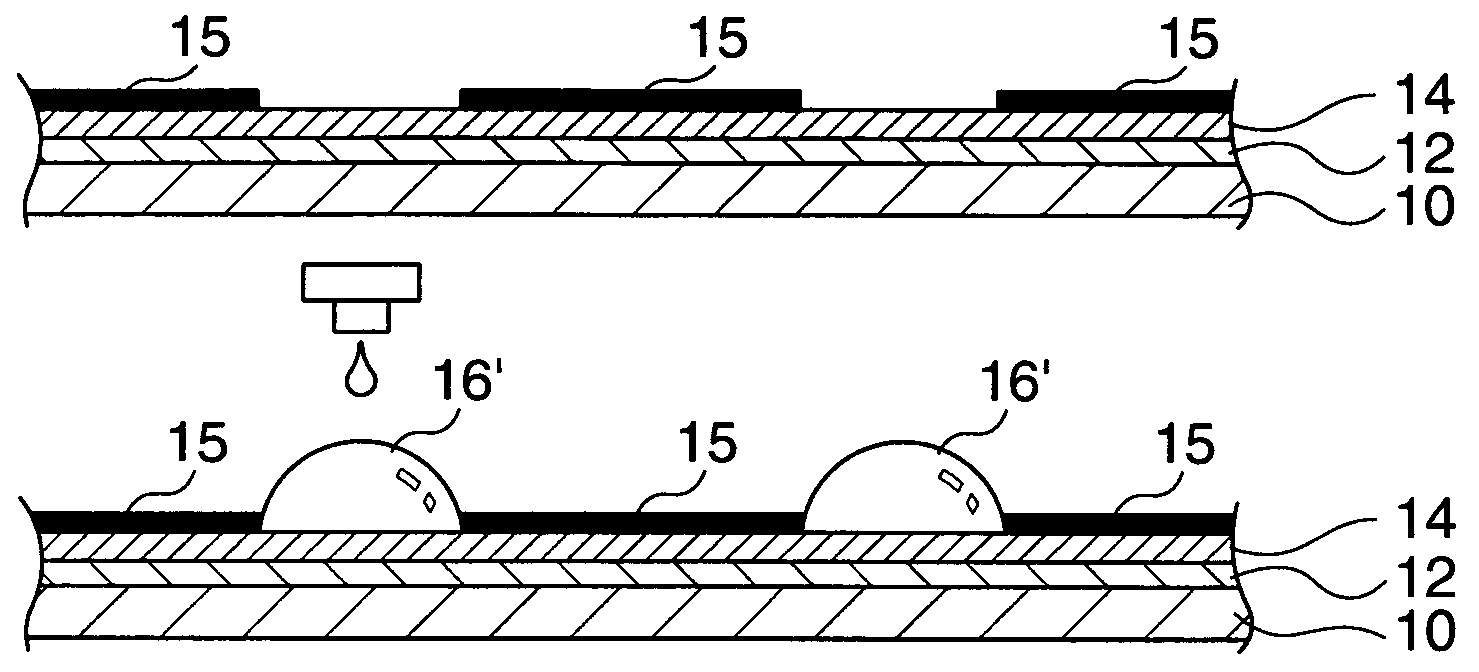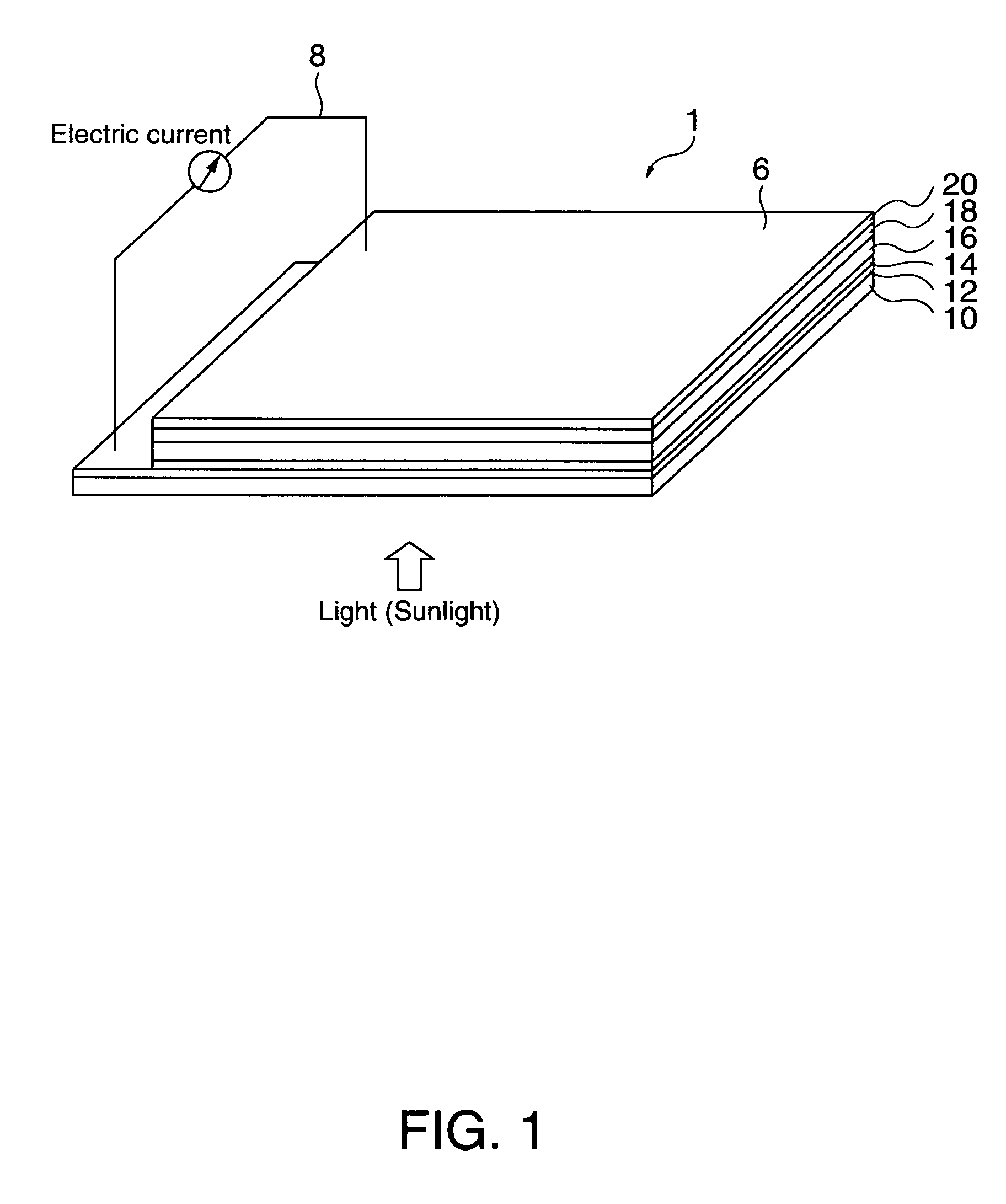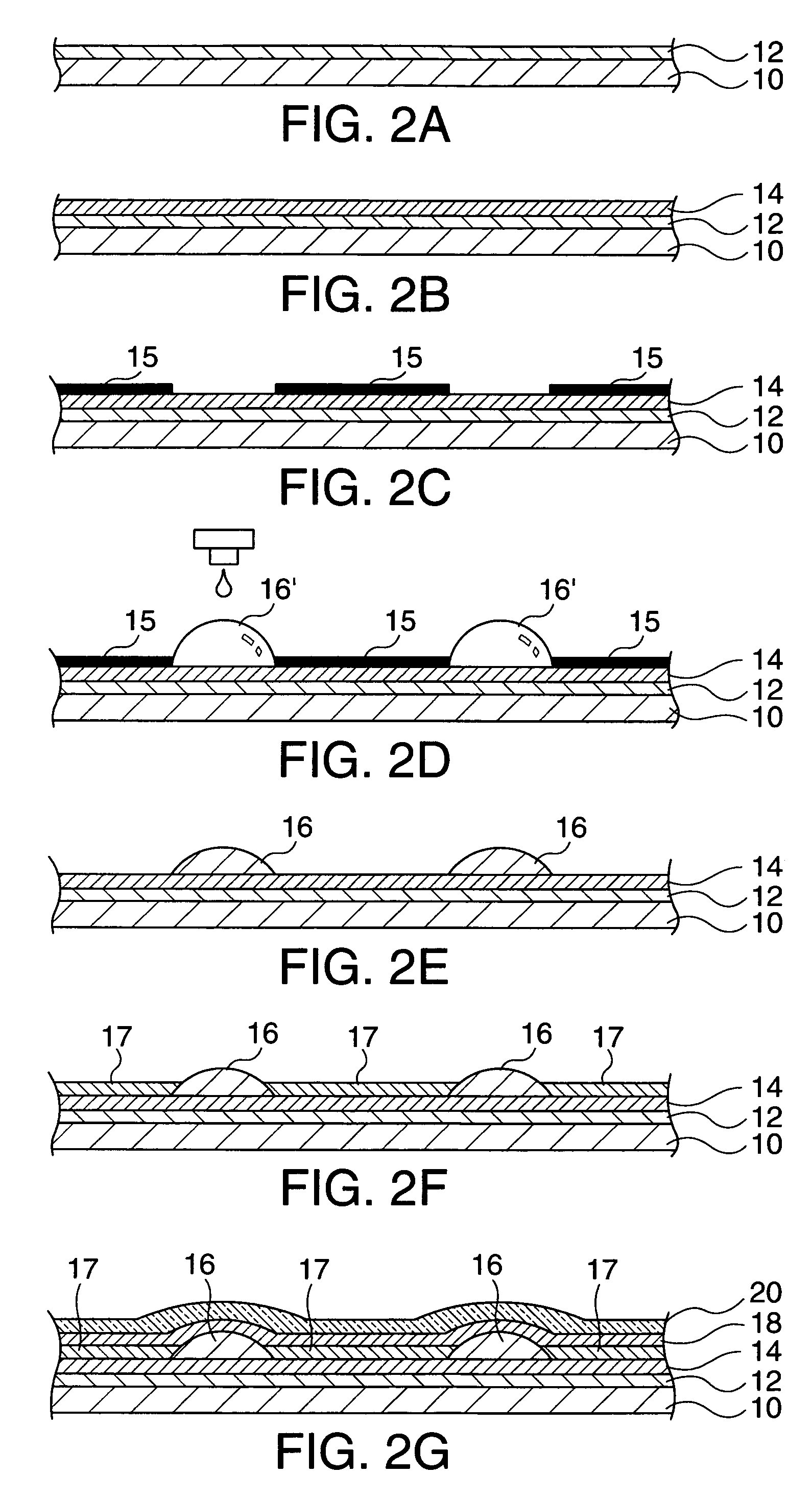Method for manufacturing photoelectric transducer, and electronic apparatus
a technology of photoelectric transducers and electronic devices, which is applied in the manufacture of final products, instruments, optical radiation measurement, etc., can solve the problems of difficult to obtain a silicon film with the method of coating composites being applied on the substrate is not suitable, and the thickness of the film thickness is difficult to obtain. achieve the effect of high photoelectric conversion efficiency, low cost and thick droplet thickness
- Summary
- Abstract
- Description
- Claims
- Application Information
AI Technical Summary
Benefits of technology
Problems solved by technology
Method used
Image
Examples
first embodiment
[0036]FIG. 1 is a perspective view showing an embodiment of the photoelectric transducer of the invention. In addition, in the following description, on the space of FIG. 1 the upper side is referred to as the “upper” or “top”, and the lower side is referred to as the “lower” or “bottom”, and the upper side face of each layer (each member) is referred to as the “upper face” and the lower side face is referred to as the “lower face”.
[0037]A photoelectric transducer 1 shown in FIG. 1 is the so-called dry type photoelectric transducer, which does not require an electrolytic solution. This photoelectric transducer 1 includes a substrate 10, a first electrode (a plate electrode) 12, a P type semiconductor layer 14 as a first semiconductor layer, an I type semiconductor layer 16 as a second semiconductor layer, an N type semiconductor layer 18 as a third semiconductor layer, and a second electrode (an opposing electrode) 20. Hereinafter, the configuration of each layer (each part) is desc...
second embodiment
[0071]This embodiment features that after forming the island-like silicon film as the I type semiconductor layer, droplets containing a silicon compound are arranged offsetting the center thereof relative to that of the already-formed silicon film, thereby forming a thicker I type semiconductor layer.
[0072]After having proceeded to the step of forming the first electrode, the step of forming the P type semiconductor layer, the step of forming the liquid-repellent film, the step of forming the precursor film of the silicon film, and the heat treatment step, a silicon film, which is the I type semiconductor layer, is formed in an island shape. In FIG. 4A, there is shown a part of the plane view in the state in which the island-like silicon film is formed, and a sectional view along the VA through VA line in the view is shown in FIG. 5A.
[0073]Step of Forming the Liquid-Repellent Film: A Second Time
[0074]Then, as shown in FIG. 4B, and FIG. 5B which is a sectional view along the VB-VB li...
PUM
 Login to View More
Login to View More Abstract
Description
Claims
Application Information
 Login to View More
Login to View More - R&D Engineer
- R&D Manager
- IP Professional
- Industry Leading Data Capabilities
- Powerful AI technology
- Patent DNA Extraction
Browse by: Latest US Patents, China's latest patents, Technical Efficacy Thesaurus, Application Domain, Technology Topic, Popular Technical Reports.
© 2024 PatSnap. All rights reserved.Legal|Privacy policy|Modern Slavery Act Transparency Statement|Sitemap|About US| Contact US: help@patsnap.com










